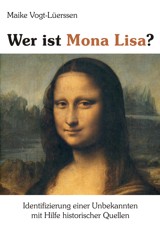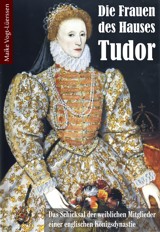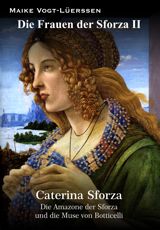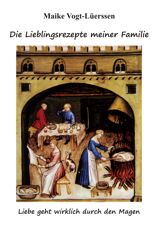Wer ist Mona Lisa? – Identifizierung einer Unbekannten mit Hilfe historischer Quellen
als Buch bei amazon.de: 172 Seiten, mit Stammtafeln und 136 Bildern (130 Bilder in Farbe), Independently published, 1. Auflage, ISBN 978-1-9831-3666-5, € 29,31


Karl II. war das zweite Kind des englisch-schottischen Königs Karl I. Stuart (1600-1649) und seiner Gattin Henriette Maria von Frankreich (1609-1669). Er hatte noch einen älteren Bruder, Karl Jakob, der am 13. Mai 1629 das Licht der Welt erblickte, jedoch als Siebenmonatskind nur eine Stunde am Leben blieb. Karl II. selbst wurde am 29. Mai 1630 geboren und starb am 6. Februar 1685.
Hinsichtlich seiner Geburt lesen wir Folgendes: "Around dawn the next day [am 29. Mai 1630], the labor began. Again there were the shuttered windows, the guarded doors, the burning fire, the queen [Henriette Maria von Frankreich] in pain on her linen sheets. The surgeon Peter Chamberlen was in attendance, as a precaution, but this time the birth was managed by Madame Peronne, and everything went as well as could be wished. By noon, the twenty-year-old queen found herself, '(God be thanked) ... in good estate,' 'the happy mother of a Prince of Wales.' Charles [I. Stuart] was overjoyed. A year after the death of his first baby, he now had a healthy son: 'a fair prince' showing every indication that 'he will be very strong and vigorous.' ... while his happy nurses told and retold the story of how 'he had never clenched his fists, but had always kept his hands open' - a sure sign 'that he will be a prince of great liberality.' ... the tiny Prince of Wales had a household of more than thirty people. There were eight rockers for the baby's cradle, and eight more maids to wait on them. There were nurses, a physician, an apothecary, a laundress and her maids, and a wet nurse whose breastfeeding would be the baby's only source of food for the first year. ... 'He is so fat and so tall that he is taken for a year old,' she [Henriette Maria von Frankreich] wrote to Mamie Saint-Georges, 'and he is only four months: his teeth are already beginning to come. I will send you his portrait as soon as he is a little fairer, for at the present he is so dark that I am ashamed of him.' Charles was, however, never to lose his dark complexion, and years later 'the black boy' still clung to him as a nickname." (in: Katie Whitaker: A Royal Passion - The turbulent marriage of King Charles I of England and Henrietta Maria of France, id., p. 111/117 und Christopher Falkus: The Life and Times of Charles II, London 1972, p. 13). Die Dunkelhäutigkeit stammte vermutlich von seinem Urgroßvater mütterlicherseits, dem Großherzog Francesco I. de' Medici (1541-1587).
Im Gegensatz zu seinen Eltern war Karl II. als Erwachsener im Vergleich zu seinen Zeitgenossen sehr groß: "About two yards high [= 1,83 m], said the Parliamentary posters seeking his capture after the Battle of Worcester; six feet two inches [= 1,88 m], stated another, and he may have been as much as six feet three inches [= 1,91 m] tall. ... On his sea voyage towards his Restoration in May 1660, Charles marked his own height in his cabin with a knife; afterwards numerous sight-seers measured themselves against the spot, but even the tallest could not reach it." (in: Antonia Fraser: King Charles II, id., p. 10).

"... in one of the last letters of his life the King [Karl I. Stuart] addressed Charles [seinen Sohn Karl II.] in a moving phrase: 'You are the son of our love ...'" (in: Antonia Fraser: King Charles II, id., p. 12).



"The children began early on the courtly training that was all important for royal life. Even before his second birthday, Charles, Prince of Wales, was receiving foreign ambassadors with his parents. By the age of four, he was giving audiences of his own, in company with his little sister [Maria] and brother James [= Jakob II. (VII.)]. James had only just passed his first birthday. ... Sometimes the children dined in state with their parents in front of a watching crowd, and they joined the adults on stage to perform in court masques." (in: Katie Whitaker: A Royal Passion - The turbulent marriage of King Charles I of England and Henrietta Maria of France, id., p. 120).

"By all accounts young Charles [II.] was not precocious. He was forward only in his disposition to be demonstratively affectionate to those around him, a tendency which did not altogether leave him in later life. His playmates at St. James's included the daughter and two sons of the Duke of Buckingham, his father's former favourite and evil genius who had been assassinated in 1628; while younger brothers and sisters arrived periodically to join him in the nursery - Mary, after a year, James [Jakob], after three, followed by Elizabeth, Anne and Henry. It was a happy atmosphere in which to grow from infancy to boyhood ..." (in: Christopher Falkus: The Life and Times of Charles II, id., p. 13).
Apropos, die Hunde neben den Kindern: "... Charles [Karl II.] would often arrive with his dogs, particularly his beloved spaniels which he would fondle and play with ... Dogs were a Stuart family weakness, and one Cavalier, who had the misfortune of being bitten, could not refrain from the complaint: 'God bless your Majesty but God damn your dog.'" (in: Christopher Falkus: The Life and Times of Charles II, id., p. 84).
Zusatzbemerkung zum Gemälde: "The picture was intended by Henrietta Maria for her sister the Duchess of Savoy, but it had taken some time to complete because one of the subjects, Mary, would never sit still for long enough. ... At the King's behest, Charles [II.] was painted in grown-up clothes, in contrast to his younger brother James; the picture probably ended up being hung by Henrietta Maria at Somerset House." (in: Antonia Fraser: King Charles II, id., pp. 18-19).

"Academic education [in der königlichen Familie], by contrast, was a low priority. The children were tutored in French and the girls learned to sing, but even at the age of nine Prince Charles was still learning to use a pen, his large letters smudged and painstakingly formed on paper that had been specially ruled with guidelines." (in: Katie Whitaker: A Royal Passion - The turbulent marriage of King Charles I of England and Henrietta Maria of France, id., p. 120).
"... at the age of eight, it was time to give him his own court at Richmond and to take him out of the hands of women and entrust him to the care of a governor [William Cavendish, the Earl of Newcastle] ... Some of Newcastle's injunctions to his pupil are guides to Charles's developing character: 'I would not have you too studious, for too much contemplation spoils action'; 'The things that I have discoursed to you most is to be courteous and civil to everybody; and believe it, the putting off of your hat and making a leg pleases more than reward or preservation.' And, 'to women you cannot be too civil, especially to great ones.' Charles was to follow Newcastle's advice and example closely. He retained a lively curiosity in many fields, but nobody thought of him as studious; he was more attentive to the ladies, and, like his mentor, became an enthusiastic sportsman." (in: Christopher Falkus: The Life and Times of Charles II, id., pp. 13-19).

"By the time Charles was eight years old, war had broken out with his father's northern kingdom; by the time he was twelve, the whole of England was plunged in civil war. A few years more and the young Prince himself was penniless and a fugitive. ... He would die the last absolute King of Great Britain." (in: Antonia Fraser: King Charles II, London 1979, pp. 4-5).



Karl II. hatte wie sein Großvater mütterlicherseits, der französische König Heinrich IV., und wie sein Cousin, der französische König Ludwig XIV., unzählige Geliebte in seinem Leben. Hier können nur die wichtigsten Frauen in seinem Leben genannt werden: Lucy Walter (um 1630-1658); Barbara Villiers (1640-1709), Lady Castlemaine und Herzogin von Cleveland; Louise de Kéroüalle (1649-1734), Herzogin von Portsmouth; und Nell Gwynne oder Gwyn (1650-1687).
Wie viele uneheliche Kinder besaß Karl II. Stuart? "As far as one can keep track of them, the total of those that survived long enough to feature in the royal records was a round dozen. ... These twelve known bastards were born from seven women: Lucy Walter, Elizabeth Killigrew, Catherine Pegge, Barbara Villiers (mother of five), Nell Gwynn (mother of two), Moll Davis [one child: the daughter Mary Tudor] and Louise de Kéroüalle. ... six of the King's sons received nine dukedoms: Monmouth and Buccleuch for Lucy Walter's son; Southampton, Northumberland and Grafton and Cleveland, on her death, for Barbara's three boys; St Albans for Nelly's surviving son; Richmond and Lennox (joined together) for Louise's only child. ... As for the King's favourite, the solace of his later years, Charlotte Countess of Lichfield, her sweetness and impeccable virtue bore out a pleasanter axiom: that an amoral mother will often produce a paragon of a daughter - for she was the offspring of the hot-tempered Barbara Duchess of Cleveland. ... The King was also extremely fond of Charles, Earl of Burford and then Duke of St Albans, surviving son of Nelly." (in: Antonia Fraser: King Charles II, id., pp. 411-415).

Ein Zeitgenosse berichtet uns über Karl II. Stuart Folgendes: "He is somewhat taller than the middle stature of Englishmen, and so exactly formed, that the most curious eye cannot find one error in his shape. His face is rather grave than severe, which is very much softened whensoever he speaks. His complexion is somewhat dark, but much enlightened by his eyes, which are quick and sparkling. Until he was near twenty years of age, the figure of his face was very lovely; but he is since grown leaner, and now the majesty of his countenance supplies the lines of beauty. His hair, which he hath in great plenty, is of a shining black, not frizzled, but so naturally curling into great rings, that it is a very comely ornament. His motions are so easy and graceful, that they do very much commend his person when he either walks, dances, plays at pall mall, at tennis, or rides the great horse, which are his usual exercises ... To the gracefulness of his deportment may be joined his easiness of access, his patience in attention, and the gentleness both in the tone and style of his speech ... Amongst his acquired endowments, these are the most eminent: he understands Spanish and Italian, speaks and writes French correctly; he is well versed in ancient and modern history, hath read divers of the choicest pieces of the Politic, hath studied some useful parts of the mathematics, as fortification, and the knowledge of the globes; but his chief delight is in navigation ... He is the pattern of patience and piety, the most righteous and justest of Kings. The most knowing and experienced of Princes. The holiest and the best of men. The severest punisher of vice; and the strictest rewarder of virtue. The constant preserver in religion. And the truest lover of his subjects." (in: Christopher Falkus: The Life and Times of Charles II, id., pp. 74-76).

"Charles's energy was quite astonishing. No matter how late he went to bed he would rise early, often at five in the morning, for boating on the Thames, walking 'at a large pace' for hours at a stretch in the park, hunting or riding. ... A game at which Charles excelled was pall mall, from which the London street name is derived. It was played with a mallet, with the object of striking a ball through a ring which was hung about six feet from the ground." (in: Christopher Falkus: The Life and Times of Charles II, id. p. 83).

"Throughout his life Charles was, in his political and personal relationships alike, an opportunist. He embraces and discarded his policies as he embraced and discarded his mistresses." (in: Christopher Falkus: The Life and Times of Charles II, id., p. 148).


Als er im Sterben lag, "[he] received from the priest who had saved him at the Battle of Worcester, now an old man, the sacrament which the Catholic Church had never permitted him to receive before." (in: Marie Ruan Hopkinson: Anne of England – The Biography of a great Queen, id., p. 94).
Die letzten Tage von Karl II. Stuart: "The evening of February the first ... he spent with his dissolute associates … The courtiers were gambling, with a bank of two thousand pounds before them. … From this scene of profanity and dissoluteness, the King proceeded to the apartments of the Duchess of Portsmouth [ Louise de Kéroüalle], where, being too unwell to partake of a substantial supper, he ate two or three spoonfuls of soup. After passing a feverish and restless night, he rose at an early hour. To his attendants he appeared to be labouring under an affection of the brain; he was drowsy and absent, his gait was unsteady, and his speech embarrassed. About eight, as he walked across his chamber, he was seized with a strong fit of apoplexy;: Lord Aylesbury caught him as he fell, and Dr. King, a physician, who had practised as a surgeon, being in an adjoining room, hastened to his assistance, and instantly opened a vein. The blood flowed freely, and stimulating remedies being applied, the royal patient in about two hours recovered his faculties. He suffered a relapse in the evening, passed a bad night, but so improved in the course of the next day, that hopes were cherished of his recovery. … The King, on recovering his speech, after his first attack, asked for the Queen, and found she was by his side. Instantly, on hearing of his illness, she had rushed to his presence, and the Duke of York [sein Bruder Jakob II. (VII.) Stuart] had preceded, and the Duchess of York soon followed her Majesty. … Shortly afterwards, the sight of her husband’s sufferings threw her into fits, and she was carried out of the room. … About two in the morning [am 4. Februar], he cast his eyes upon the Duke, who was kneeling by his bedside, kissing his hand, and thanked him for having always been the best of brothers and friends; begged his pardon for the trouble which he had given him from time to time, and told him now he freely left him all, and begged of God to bless him with a prosperous reign. He never mentioned the name of the Duke of Monmouth; but sending for his other illegitimate sons, he recommended them to the care of James [seinem Bruder Jakob II. (VII.) Stuart], and drawing each to him, one by one, on the bed, gave them a father’s blessing. The bishops, moved by this sight, urged him as the Lord’s anointed, and the father of his country, to bless all present in the name of the whole body of his subjects; every one in the chamber instantly went down on his knees, and Charles, being raised up, pronounced a solemn blessing over them. He then entreated the Duke of York not to let 'poor Nelly Gwyr: starve,' and for his sake to protect the Duchesses of Portsmouth and Cleveland. Afterwards he endeavoured to repose, but his next slumber was to be the sleep of death. … he calmly expired about noon, on the sixth of February, 1685 …" (in: Francis Lancelott: The Queens of England and their Times, Volume II, id., pp. 738-740).
"After the death of King Charles II the ordinary people walked about 'like ghosts'. Roger North wrote that 'almost every living soul cried before and at his Decease, as for the loss of the best Friend in the World'. Others felt that they had lost a father, that feeling spontaneously expressed at the King's death-bed when all present, not only his children, had knelt for his paternal blessing." (in: Antonia Fraser: King Charles II, id., p. 458).

Wer ist Mona Lisa? – Identifizierung einer Unbekannten mit Hilfe historischer Quellen
als Buch bei amazon.de: 172 Seiten, mit Stammtafeln und 136 Bildern (130 Bilder in Farbe), Independently published, 1. Auflage, ISBN 978-1-9831-3666-5, € 29,31

als Buch bei amazon.de: 552 Seiten, mit Stammtafeln und 292 sw Bildern, Independently published, 1. Auflage, ISBN 978-1-9768-8527-3, € 31,84 (großes Buchformat: 21 x 27 cm)
als E-Book bei amazon.de erhältlich, ca. 1.000 Seiten mit Stammtafeln und 292 Bildern, € 29,89

Die Frauen der Sforza I: Bianca Maria Visconti – Die Stammmutter der Sforza
nur als Buch (Farbband) bei amazon.de: 294 Seiten, mit Stammtafeln und 243 Bildern, Independently published, 1. Auflage 2020, ISBN 978-1-6515-0580-9, € 43,90

Die Frauen der Sforza II: Caterina Sforza - Die Amazone der Sforza und die Muse von Botticelli
nur als Buch (Farbband), bei amazon.de: 320 Seiten, mit Stammtafeln und 153 Bildern, Independently published, 1. Auflage 2021, ISBN 979-8-7119-9157-1, € 44,73

Die Lieblingsrezepte meiner Familie – Liebe geht wirklich durch den Magen (3. Auflage)
bei amazon.de:126 Seiten mit farbigen und schwarz-weißen Bildern, Independently published, ISBN 979-8-7648-5958-3, € 13,28